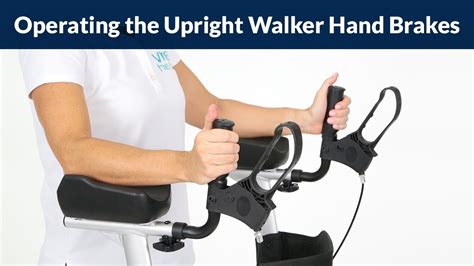Safe Walking Starts With Walker Brake Repair
Maintaining the safety and functionality of your walker is paramount, especially if you rely on it for mobility. A crucial aspect of walker safety is ensuring its brakes are in top working condition. Failing brakes can lead to falls, injuries, and a loss of confidence in your mobility aid. This article delves into the importance of walker brake repair, providing insights into common issues, DIY solutions, and when professional help is necessary.
Why Are Walker Brakes So Important?
Walkers provide stability and support, but their effectiveness hinges heavily on properly functioning brakes. These brakes are your safety net, preventing unwanted slippage or uncontrolled movement, particularly on inclines or uneven surfaces. Malfunctioning brakes significantly increase the risk of falls, which can lead to serious injuries, especially among the elderly or individuals with pre-existing conditions.
Common Walker Brake Problems
Several issues can compromise the effectiveness of your walker's brakes. Understanding these common problems can help you address them promptly and prevent accidents.
1. Brake Lever Issues:
- Loose or Broken Levers: Worn or damaged brake levers can fail to engage properly, leading to ineffective braking.
- Stiff or Stuck Levers: Difficulty engaging or disengaging the levers suggests potential mechanical problems requiring attention.
2. Brake Cable Problems:
- Snapped or Loose Cables: Broken or loose brake cables will render the brakes completely useless.
- Frayed or Damaged Cables: Deteriorated cables may weaken, reducing their braking power and increasing the risk of breakage.
3. Brake Pad Issues:
- Worn-out Brake Pads: Over time, brake pads wear down, reducing their friction and braking effectiveness. This is the most common reason for brake failure.
- Contaminated Brake Pads: Dirt, debris, or moisture can accumulate on the brake pads, hindering their ability to grip the walker's wheels.
4. Wheel Issues:
- Wheel Wobble or Damage: Damaged or misaligned wheels can affect brake performance and overall walker stability.
How to Troubleshoot and Repair Walker Brakes (DIY Solutions)
For minor issues, you might be able to perform basic repairs yourself. However, always consult your walker's instruction manual before attempting any repairs. If you are unsure about any aspect of the repair, it's best to seek professional assistance.
1. Inspecting Brake Levers and Cables:
Check the levers for any signs of damage or looseness. Tighten loose screws or replace damaged levers if necessary. Examine the brake cables for fraying, breakage, or looseness. If the cable is damaged, it should be replaced.
2. Cleaning Brake Pads:
Use a brush or compressed air to remove dirt, debris, and moisture from the brake pads. If the pads are significantly worn, they need to be replaced. Note: Replacement brake pads are usually readily available from medical supply stores or online retailers. Ensure you purchase pads that are compatible with your walker model.
3. Tightening Loose Components:
Check all nuts, bolts, and screws associated with the brakes and wheels to ensure they are securely tightened.
When to Seek Professional Help
While some minor repairs are manageable at home, certain situations necessitate professional intervention:
- Severe Damage: If the walker's frame or any major components are damaged, you should not attempt repairs yourself.
- Complex Mechanical Issues: If you are unable to diagnose or repair the problem after inspecting the components, seek professional assistance.
- Lack of Confidence: If you're unsure about any aspect of the repair process, it’s safer to have a professional handle it.
Professional repair services are often offered by medical supply stores or specialized mobility equipment repair shops.
Preventing Future Brake Problems
Regular maintenance is crucial for extending the lifespan of your walker's brakes and preventing unexpected failures.
- Regular Inspections: Inspect your walker's brakes regularly for wear and tear, loose components, or damage.
- Cleaning: Keep the brakes clean and free from debris.
- Proper Usage: Use your walker correctly and avoid overloading it.
- Professional Maintenance: Consider scheduling professional maintenance checks periodically.
Safe walking requires a reliable walker, and reliable walkers depend on functional brakes. By understanding common problems, performing basic maintenance, and knowing when to seek professional help, you can ensure your walker remains a safe and effective mobility aid. Prioritizing walker brake repair is an investment in your safety and well-being.

